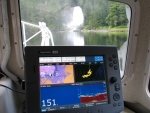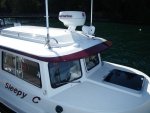Gene&Mary
New member
We have been in contact with Sam Landsman about this year's trip to Alaska. We'll see.
We have never had either radar or a chart plotter. Sam says a chart plotter is a must and radar is really useful due to fog in the late summer.
Questions/opinions requested. I'm sure these questions have been asked previously but with technology changing as fast as it does and our having a reason to now pull the trigger, it would be nice to have anyone's latest opinion.
What do you think about a combination radar/chart plotter or just getting a stand alone radar and using an ipad or a tablet as the chart plotter?
Who would you recommend in the Puget Sound area to install the equipment on our C22?
Thanks
We have never had either radar or a chart plotter. Sam says a chart plotter is a must and radar is really useful due to fog in the late summer.
Questions/opinions requested. I'm sure these questions have been asked previously but with technology changing as fast as it does and our having a reason to now pull the trigger, it would be nice to have anyone's latest opinion.
What do you think about a combination radar/chart plotter or just getting a stand alone radar and using an ipad or a tablet as the chart plotter?
Who would you recommend in the Puget Sound area to install the equipment on our C22?
Thanks



